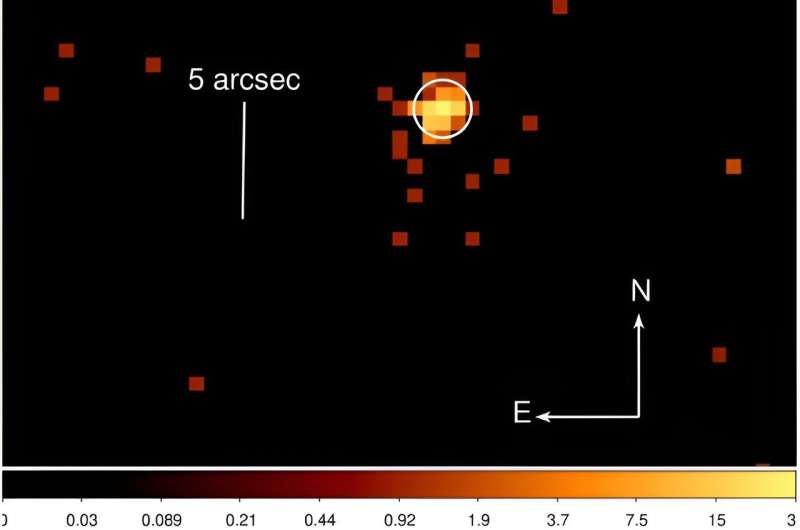January 31, 2024 report
This article has been reviewed according to Science X's editorial process and policies. Editors have highlighted the following attributes while ensuring the content's credibility:
fact-checked
preprint
trusted source
proofread
Researchers investigate the nature of a recently discovered very-high-energy source

Using XMM-Newton, Chandra and NuSTAR space telescopes, an international team of astronomers has explored the nature of a recently-detected very-high-energy source designated 2FHL J1745.1–3035. Results of the study, published Jan. 24 on the pre-print server arXiv, suggested that the source may be a pulsar wind nebula.
The Second Fermi-LAT Catalog of High-Energy Sources (2FHL) presents the locations, spectra, and variability properties of 360 sources significantly detected in the 50 GeV–2 TeV energy range as part of NASA's Fermi mission. It contains 12 very-high-energy (VHE) sources in the Galactic plane with a gamma-ray photon index lower than 1.8, that currently lack any association.
One such unassociated VHE source is 2FHL J1745.1–3035, located close to the Galactic center. In gamma-rays, this source is the second brightest of the unassociated VHE sources in the 2FHL sample. Previous observations have found that 2FHL J1745.1–3035 has a hard spectrum in the gamma-rays above 50 GeV, and that it is a TeV emitter.
In order to shed more light on the properties and nature of 2FHL J1745.1–3035, a group of astronomers led by Stefano Marchesi of the University of Bologna in Italy, has analyzed the new archival data from NASA's Chandra and NuSTAR spacecraft, as well as from ESA's XMM-Newton satellite.
"We present a multi-epoch, multi-observatory X-ray analysis for 2FHL J1745.1–3035, a newly discovered very high energy Galactic source detected by the Fermi Large Area Telescope (LAT) located in close proximity to the Galactic center," the researchers explained.
By analyzing the X- and gamma-ray properties of 2FHL J1745.1-3035, the astronomers found that the X-ray source is compact, with no evidence for extension. However, Chandra observations allowed the researchers to detect significantly extended emission up to a scale of approximately 5 arcseconds.
The investigation of spectral properties of 2FHL J1745.1-3035 shows that the source is very hard at energies below 10 keV, and significantly softer in the higher energy range. According to the study, the source broadband X-ray spectrum is best-fitted with a broken power law model with break energy of about 7 keV.
The authors of the paper conclude that the results of the study suggest that 2FHL J1745.1–3035 is most likely a powerful pulsar wind nebula (PWN). In general, PWNe are nebulae powered by the wind of a pulsar. Pulsar wind is composed of charged particles and when it collides with the pulsar's surroundings, in particular with the slowly expanding supernova ejecta, it develops a PWN.
If the PWN scenario for 2FHL J1745.1–3035 is confirmed by further studies, it would be one of the hardest PWNe ever detected in the X-rays and the hardest ever detected in the gamma-rays.
More information: Stefano Marchesi et al, 2FHLJ1745.1-3035: A Newly Discovered, Powerful Pulsar Wind Nebula Candidate, arXiv (2024). DOI: 10.48550/arxiv.2401.13806
Journal information: arXiv
© 2024 Science X Network




















